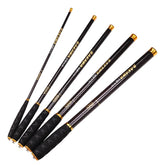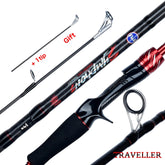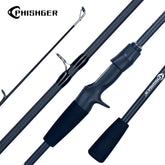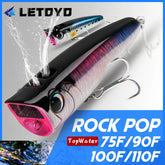From 3" paddletails to big glides, swimbaits catch fish because they look and feel real. This guide shows how to choose sizes, pick the right hook or jig head, dial retrieve speed, and match rod/line for more bites - tested on real water.
Table of contents
- Why swimbaits work
- Main types of swimbaits
- Choose the right size & weight
- Rigging options & hooks
- Rod, reel & line setup
- Retrieves that get eaten
- Quick fixes for common problems
Why swimbaits work
- Natural profile: A bait-shaped silhouette that matches local forage.
- Built-in action: Paddletails thump and roll on a steady wind; glides sweep on slack-line ticks.
- Search power: Cover water quickly yet stay in the strike zone.
Main types of swimbaits
- Paddletail soft plastics: The do-everything swimbait. Easy to rig on a jig head or weighted hook.
- Line-through / pre-rigged soft swimbaits: Hook stays in fish better and protects the bait.
- Hard glides (two-piece): Wide S-curve on slow cranks with rod-tip twitches; great for followers and big bites.
Choose the right size & weight
| Scenario | Swimbait size | Head/weight | Where it shines |
|---|---|---|---|
| Clear water, small baitfish | 3–3.8" paddletail | 1/8–1/4 oz | Open water, counting down to suspended fish |
| Grass edges, ponds, rivers | 3.8–4.3" paddletail | 1/4–3/8 oz | Slow-rolling just above weeds/rock |
| Bigger profile, lakes w/ shad | 4.8–5.8" paddletail | 3/8–1/2 oz | Wind-blown points & flats |
| Target trophies, followers | 6–7" glide bait | Stock weights | Shade lines, bluff walls, big cover |
Rigging options & hooks
- Jig head (open hook): Best hookup ratio in open water/rock. Keep hooks exposed and size to sit mid-body.
- Weighted swimbait hook (EWG screw-lock): Weedless through grass/wood. Choose weight to keep the bait level.
- Line-through: Thread line through the bait to a treble; the bait slides up on the fight—less leverage for the fish.
Hook sizing quick rule: Hook gap should reach the top of the bait’s back when lightly pressed. For a 3.8" paddletail, a 3/0–4/0 EWG or 3/0 jig hook is a good start.
Rod, reel & line setup
- Paddletails (3–5"): Medium or Medium-Heavy spinning rod, Fast tip; 2000–3000 reel.
- Line: 10–15 lb braid + 10–12 lb fluoro leader (18–24"). For glides, step up to 15–20 lb mono/fluoro on a heavier rod.
- Drag: Smooth and just slips on surges—about one third of line strength.
Shop the gear: combos • rods • reels • swimbaits • hooks & jig heads
Retrieves that get eaten
- Slow roll: Steady, slow retrieve that just ticks cover. The tail should thump without the bait rolling over.
- Burn & kill: Two fast turns, then kill it—most strikes come on the stop.
- Stair-step: Count down, reel 5–6 turns, pause for a small fall; repeat.
- Glide S-curve: For hard glides, slow crank with occasional rod-tip taps to widen the S, then a long pause near shade or cover.
Quick fixes for common problems
- Bait rolls over: Add weight or slow down; check that the hook is perfectly centered.
- Tail won’t thump: Trim flashing on cheap baits; upsize head 1 step.
- Short strikes: Add a small stinger treble on the belly (open water only).
- Too many snags: Switch to a weighted EWG and crawl the bait just above the cover.
Want a head start? Grab a balanced combo or our field-tested swimbait picks. Use code TACKLEJOY10 for 10% off your first order. Free shipping on $69+ after discount.
Suggested images
- Close-up of a 3.8" paddletail rigged on a 1/4 oz jig head — alt: Paddletail swimbait on jig head
- Weighted EWG with screw-lock next to a swimbait — alt: Weedless swimbait hook sizing
- Angler slow-rolling a swimbait along a grass edge — alt: Slow-roll retrieve along weed line
Tags:










